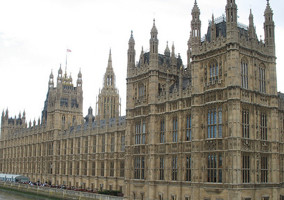Spending on direct mail by charities has fallen by nearly 15 per cent since 2011, but remains the most popular form of advertising for voluntary organisations, according to new research by nfpSynergy.
An update of nfpSynergy’s Ad Infinitum report looking at charity advertising trends has been published today by think tank nfypSynergy, and shows that while overall charity spending on direct mail has fallen by 14.8 per cent since 2011, it still remains by far the most popular form of charity advertising.
Indeed the figures in the report, taken from ratecard and Nielsen online estimations, show that direct mail has remained the charity sector’s preferred means of advertising since at least 2006.
In 2011 charities spent on average 71.2 per cent of their overall advertising budgets on direct mail and door drops, a figure which falls to 56.4 per cent by 2016. This represents a £400m fall in overall expenditure. In that same time period, direct TV advertising expenditure by charities has increased by 13 per cent, while internet expenditure has increased by around 2.5 per cent.
However, over the decade between 2006 and 2016 the report shows that on average charities dedicated 64 per cent of their total advertising budgets to direct mail.
The report suggests that, with the imminent arrival of General Data Protection Regulation in May 2018, charities may continue to slash direct mail budgets in favour of more diverse advertising channels.
The report said that “direct mail has reduced from around three quarters to a half of charities’ advertising expenditure, demonstrating a move away from direct marketing but this still dominates charities advertising portfolios.
“On the eve of GDPR this is likely to change, and may be the opportunity for charities to diversify their advertising”.
Charities spending just 5 per cent on internet marketing
Despite an overall increase in expenditure over the last five years, the report finds that compared to the overall advertising market, charities are spending relatively little on internet advertising as a sector.
According to the report, the charity sector spends on average just 5 per cent of total advertising budgets on internet advertising, compared to 46 per of total expenditure across the market as a whole.
The report also said that the overall charity increase in expenditure on digital advertising “has been spearheaded by the large charities who are increasingly investing millions of pounds in this area”. Macmillan Cancer Research currently lead the charity sector in expenditure on internet advertising, having increased its budget from just over half a million in 2014, to £2.9m in 2016.
In terms of overall advertising spend, the report said the sector’s expenditure has increased since 2004, remained steady throughout the financial crisis and then peaked in 2015.
Related Articles












